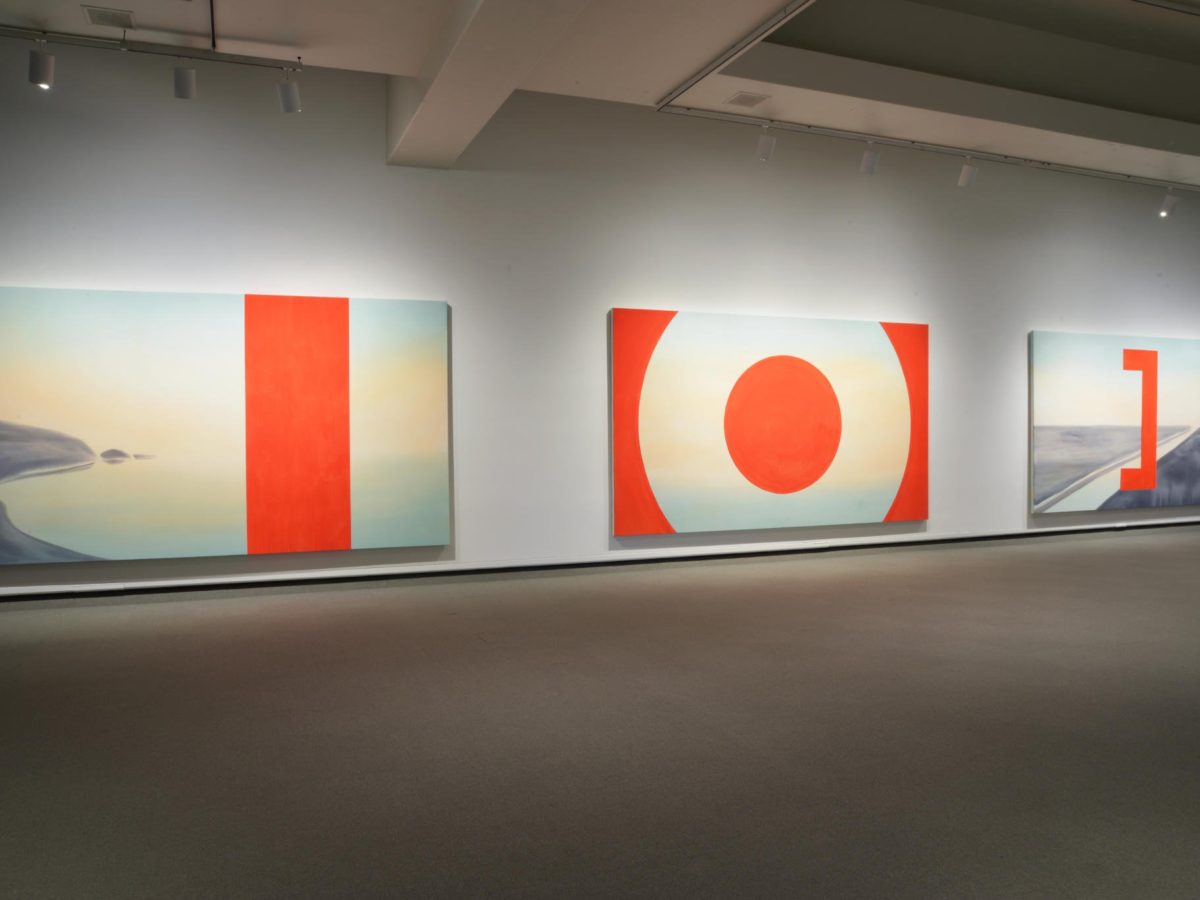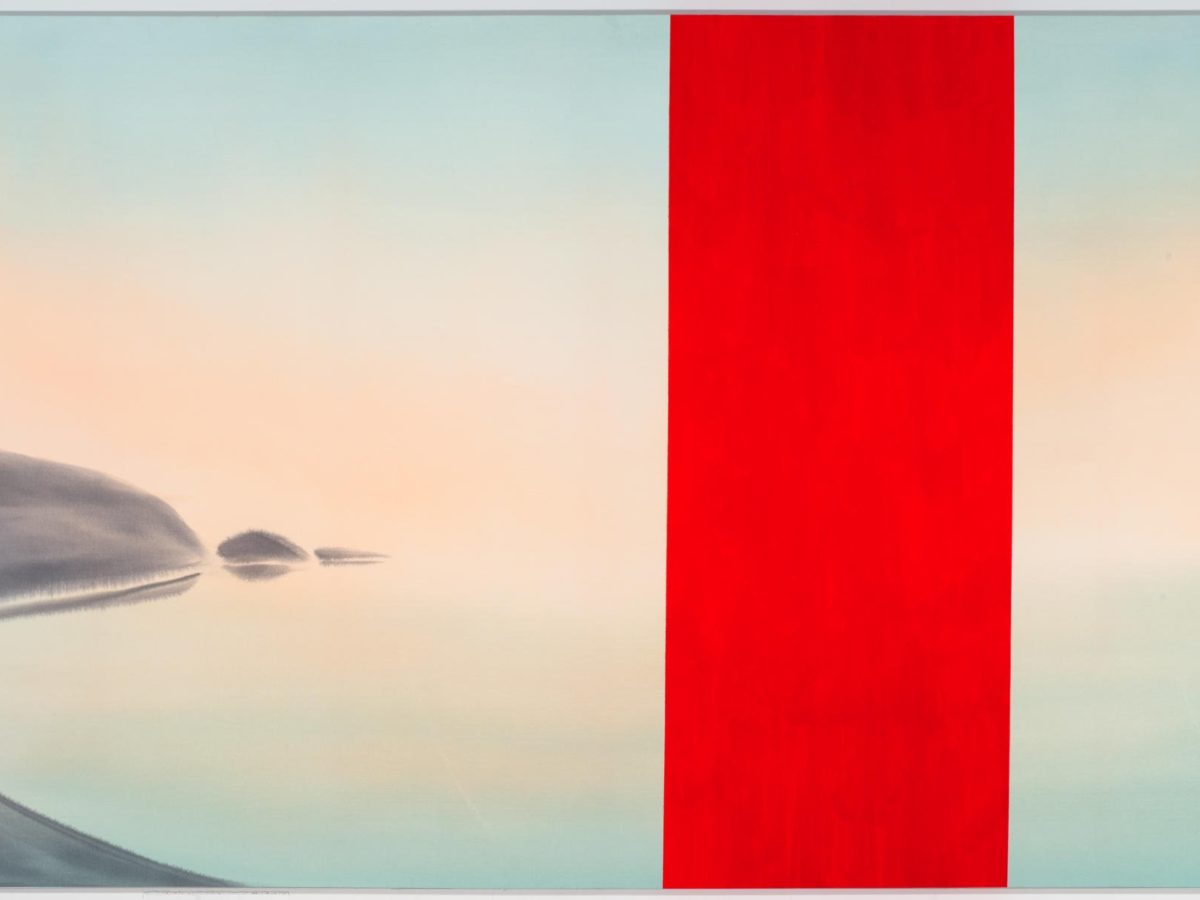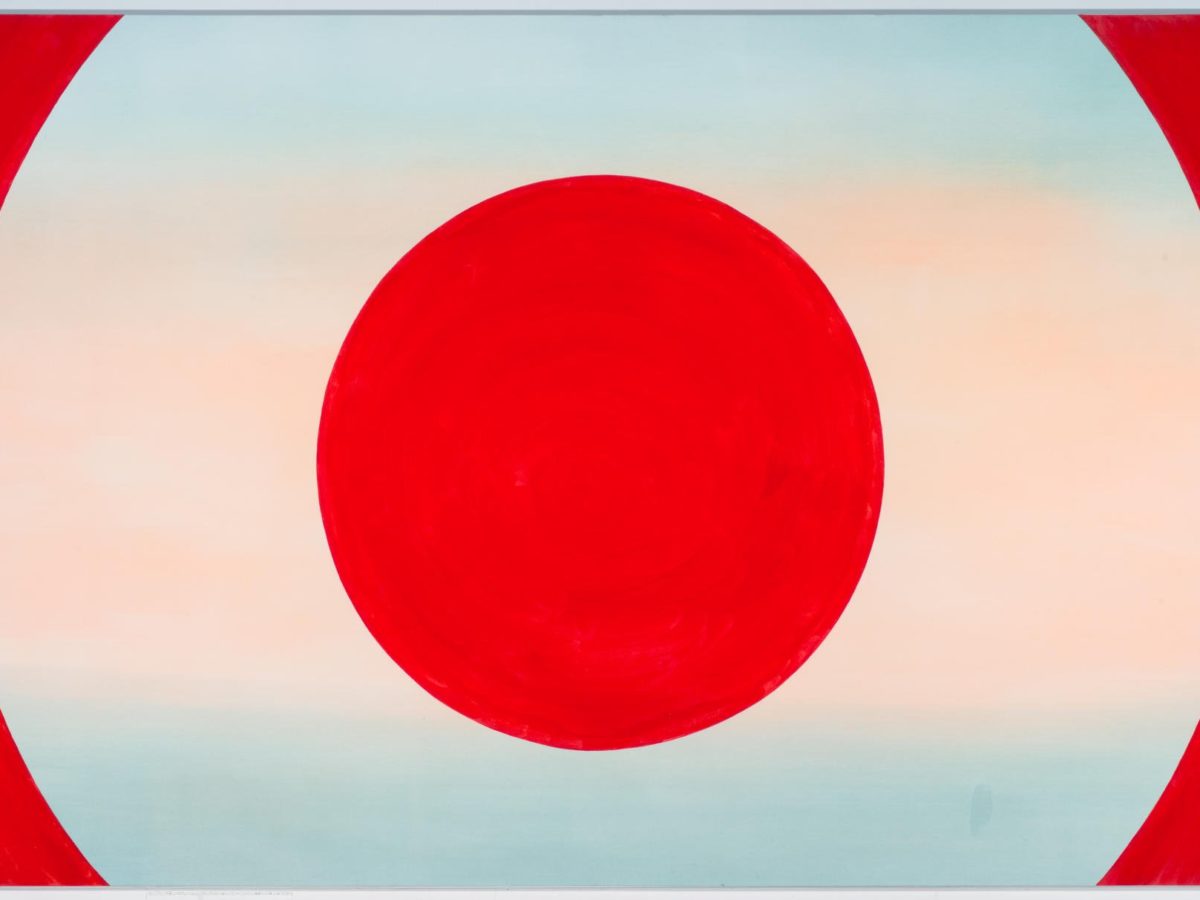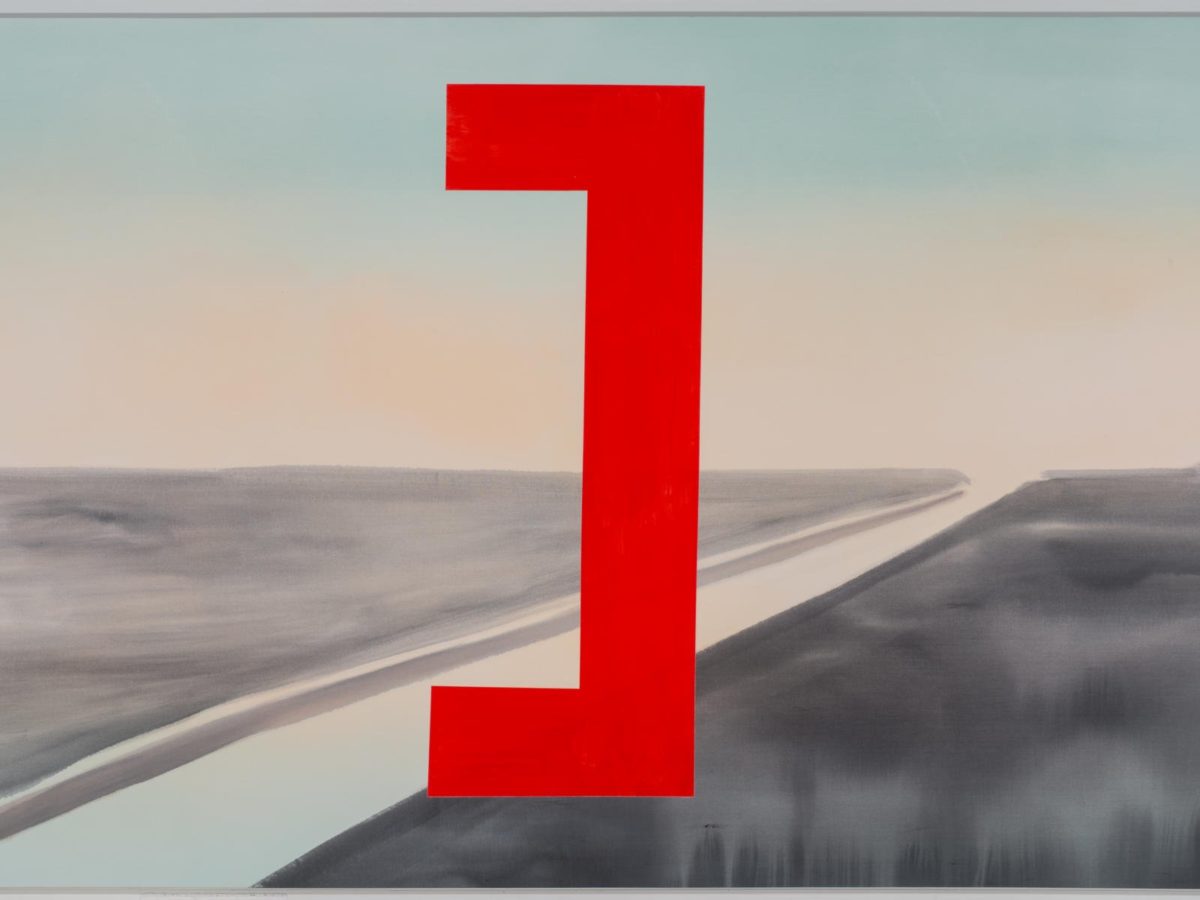Wanda Koop: Sightlines
Since receiving a Diploma of Fine Art from the School of Art, University of Manitoba (1969––1973), Wanda Koop (Canadian, born 1951) has produced a large and impressive body of work. Koop has been the subject of a number of solo exhibitions both in Canada and abroad, including Airplanes and the Wall, co-organized by the Winnipeg Art Gallery and the Art Gallery of Hamilton (1985–1987), which toured nationally; Northern Suite, Canada House, London, UK (1987); Flying to the Moon, 49th Parallel, New York (1988); Paintings for Dimly Lit Rooms, Centre international d’art contemporain, Montreal (1994); Paintings for Dimly Lit/Brightly Lit Rooms, Winnipeg Art Gallery, Art Gallery of Hamilton, and Canadian Embassy Prince Takamado Gallery, Tokyo (1996–1999); See Everything/See Nothing, Contemporary Art Gallery, Vancouver, and The New Gallery, Calgary (1998); In Your Eyes, at the Venice Biennale (2001); the MacKenzie’s exhibition Sightlines (2002); and the career survey On the Edge of Experience, Winnipeg Art Gallery and National Gallery of Canada (2010–2011).
Koop is an artist who has consistently worked in a wide range of scales, from the note-sized to the colossal. The four paintings, three in the exhibition As It Unfolds and one above the MacKenzie’s entry staircase, are from Koop’s series Sightlines (2001), which represents the culmination of a decade of painting and thinking. The artworks are among her largest paintings. They allow an appreciation of her unique ability to translate the gestural quality of an intimate brushstroke on a monumental scale. The genesis of this series dates to 1991, when Koop visited the Bois de Vincennes—the largest public park in Paris, France. While in the gardens, Koop captured through a window the video image of a landscape obscured by a red dot of the type affixed to glass to ward off birds. This red dot appeared prominently in her 1995 Green Room paintings, where it was superimposed upon grey, park-like landscapes. From the initial images of the Green Room, to the series In Your Eyes (1997–2001), to the provocative canvases that compose Sightlines, Koop’s stated intention has been to “disrupt the comfort, the familiarity [of landscape] … by imposing cross hairs, brackets, circles, dots and lines — sightlines — over the representations of places, thus evoking long-range rifles, video cameras, surveillance devices.”1 Through these works, Koop addresses the intersection of our cultural constructions of landscape (painting) with the technologies of surveillance (video).
Timothy Long, Head Curator
1 Wanda Koop, cited in Timothy Long, “Placing Desire” in Sightlines (Regina: MacKenzie Art Gallery, 2002), n.p.
Depuis qu’elle a obtenu son diplôme de beaux–arts du School of Fine Art de la University of Manitoba (1969–1973), Wanda Koop (Canadienne, née en 1951) a réalisé une vaste et impressionnante œuvre. Elle a fait l’objet de nombreuses expositions individuelles, au Canada ainsi qu’à l’étranger, notamment Airplanes and the Wall, l’exposition itinérante nationale organisé par la Winnipeg Art Gallery et la Art Gallery of Hamilton (1985–1987); Northern Suite, à la Maison du Canada, à Londres, au Royaume-Uni (1987); Flying to the Moon, à la galerie 49the Parallel, à New York (1988); Paintings for Dimly Lit Rooms, au Centre international d’art contemporain de Montréal (1994); Paintings for Dimly Lit/Brightly Lit Rooms, à la Winnipeg Art Gallery, à la Art Gallery of Hamilton et au musée de l’Ambassade du Canada, à Tokyo (1996–1999); See Everything/See Nothing, à la Contemporary Art Gallery de Vancouver et à The New Gallery, à Calgary (1998); In Your Eyes, à la biennale de Venise (2001); Lignes de visée, une exposition de la MacKenzie (2002); et la rétrospective Wanda Koop. Sur le fil de l’expérience, coorganisée par la Winnipeg Art Gallery et le Musée des beaux-arts du Canada (2010–2011).
Koop est une artiste qui n’a cessé de peindre des toiles qui varient énormément, allant du petit format de la note au colossal. Les quatre tableaux, trois dans l’exposition Au moment où cela se révèle et un au haut du grand escalier de la MacKenzie, font partie de sa série Sightlines (2001), qui représente l’aboutissement d’une décennie consacrée à la peinture et à la réflexion. Les toiles sont parmi ses plus grandes. Elles permettent d’apprécier son talent unique à traduire la gestuelle d’un coup de pinceau intime à une échelle monumentale. La genèse de la série remonte à 1991, lorsque Koop visite le bois de Vincennes— le plus grand parc public de Paris, en France. Se promenant dans les jardins, Koop saisit à travers une fenêtre l’image vidéo d’un paysage masqué par un point rouge, du genre de ceux qu’on colle sur les vitres pour empêcher les oiseaux de s’y cogner. Ce point rouge occupe une place importante dans les tableaux de la série Green Room, de 1995, dans laquelle il se superpose à des paysages gris qui suggèrent des parcs. Des premières toiles de La chambre verte, aux tableaux provocateurs de Sightlines, en passant par la série In Your Eyes (1997–2001), l’artiste déclare nettement son intention de « troubler le confort, la familiarité [du paysage] … en imposant des réticules, des crochets, des cercles, des points et des lignes de mire sur les représentations des lieux, évoquant ainsi les fusils à longue portée, les caméras vidéo et les appareils de surveillance »1 [traduction du traducteur]. Avec ces œuvres, Koop explore l’intersection de nos constructions culturelles du paysage (peinture) avec les technologies de la surveillance (vidéo).
Timothy Long, conservateur en chef
French translation by Brigitte Haguès




